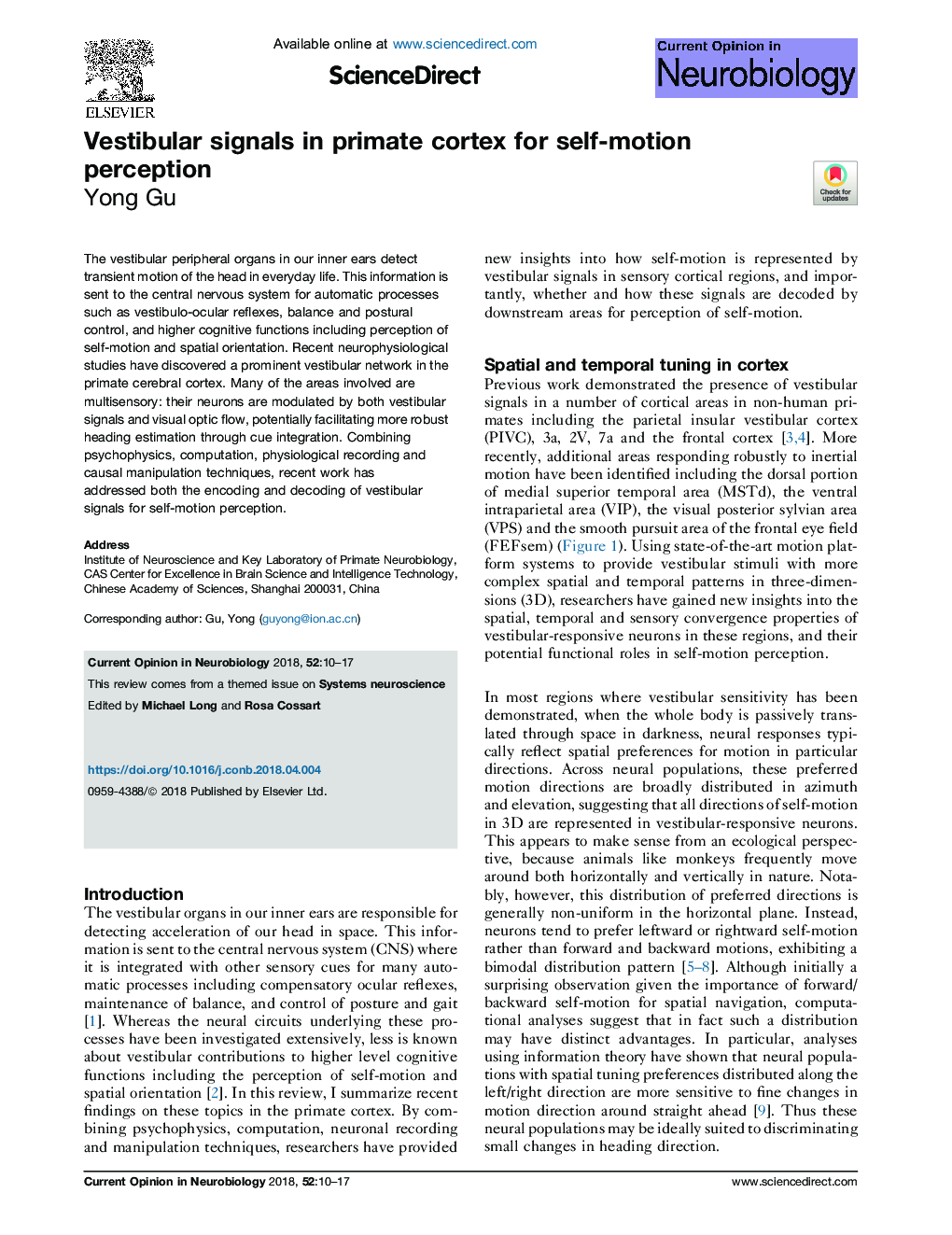| Article ID | Journal | Published Year | Pages | File Type |
|---|---|---|---|---|
| 8840033 | Current Opinion in Neurobiology | 2018 | 8 Pages |
Abstract
The vestibular peripheral organs in our inner ears detect transient motion of the head in everyday life. This information is sent to the central nervous system for automatic processes such as vestibulo-ocular reflexes, balance and postural control, and higher cognitive functions including perception of self-motion and spatial orientation. Recent neurophysiological studies have discovered a prominent vestibular network in the primate cerebral cortex. Many of the areas involved are multisensory: their neurons are modulated by both vestibular signals and visual optic flow, potentially facilitating more robust heading estimation through cue integration. Combining psychophysics, computation, physiological recording and causal manipulation techniques, recent work has addressed both the encoding and decoding of vestibular signals for self-motion perception.
Related Topics
Life Sciences
Neuroscience
Neuroscience (General)
Authors
Yong Gu,
